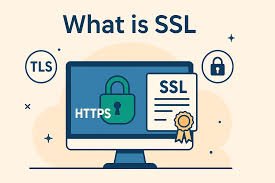A Beginner’s Guide to SSL Monitoring for Website Security
In today’s digital world, website security is not just an option, it’s a necessity. Whether you’re running a personal blog, an e-commerce store, or a corporate portal, your visitors expect secure browsing and data privacy. One of the key elements of web security is the SSL certificate, which ensures that all data exchanged between a user and your website remains encrypted and safe. This is where SSL Monitoring comes in as a proactive measure that can help you avoid unexpected downtime, lost trust, and even penalties from search engines.
An SSL certificate acts as a security guard for websites, encrypting data and ensuring it’s safely delivered. But like all certificates, SSL has an expiration date. If you’re not monitoring it regularly, you could unknowingly let it expire, which could expose your website to vulnerabilities. Worse, your visitors might get browser warnings like “This site is not secure, which can destroy your credibility in seconds.
That’s why SSL monitoring has become a standard practice among smart webmasters. Let’s break down why it matters, how it works, and how it can safeguard your online presence.
What Is SSL and Why Is It Important?
SSL stands for Secure Sockets Layer, a protocol that encrypts the data exchanged between a user’s browser and a website. It’s the technology that powers the little padlock icon you see in your browser’s address bar.
Without SSL, any data transferred such as login credentials, credit card numbers, or personal information is vulnerable to interception by hackers. This is particularly dangerous for e-commerce sites, online banking platforms, and any site that collects sensitive information.
SSL also affects your website’s SEO. Google has officially stated that HTTPS (secured via SSL) is a ranking signal. That means a website with SSL is more likely to rank higher in search results than one without.
However, installing an SSL certificate isn’t enough. You need to maintain it, ensure it doesn’t expire, and confirm that it’s correctly configured at all times. And that’s where SSL monitoring steps in.
What Happens If You Don’t Monitor SSL?
SSL certificates come with expiration dates often 90 days or a year depending on the provider. If a certificate expires, browsers will start showing scary security warnings that can instantly drive away visitors.
Even if your SSL is valid, misconfigurations like incorrect domain settings or chain issues can also cause trust problems. Manually checking your SSL certificate might work if you manage a single website, but what if you run multiple websites or client projects?
A single lapse could cost you in multiple ways:
Loss of visitor trust
Drop in search engine rankings
Data exposure risks
Revenue loss in case of e-commerce
With SSL Monitoring tools, you can receive early alerts when your certificate is close to expiration or if any misconfiguration is detected. This gives you ample time to act before your visitors ever notice a problem.
How Does SSL Monitoring Work?
SSL monitoring tools perform automated checks on your SSL certificate. These checks usually run every few minutes or hours, depending on the service. Here’s what these tools typically monitor:
Expiration Dates: Sends alerts before your SSL certificate expires.
Domain Mismatches: Ensures the certificate matches your website’s domain(s).
Revocation Checks: Monitors if the certificate has been revoked by the issuer.
Chain of Trust: Verifies if the certificate chain is complete and correctly installed.
Certificate Authority Trust: Confirms that your SSL is issued by a trusted authority.
The goal is to provide constant visibility and immediate alerts via email or SMS if anything goes wrong. This real-time protection keeps your website secure and your brand reputation intact.
Who Needs SSL Monitoring?
Every website owner can benefit from SSL monitoring, but it’s especially important for:
E-commerce websites that handle customer payments and personal info.
Service providers with login systems or client portals.
Developers and agencies managing multiple sites.
Startups and SMEs who want to build trust from day one.
It’s not just for large corporations. Even a small blog should maintain SSL to ensure user safety and earn search engine trust.
Read Also: 5 Benefits of Biotech Skids for Manufacturing
Benefits of Reliable SSL Monitoring
Let’s take a closer look at why SSL monitoring is a smart investment:
1. Avoid Expired Certificates
Timely alerts ensure you renew certificates before they expire, avoiding browser warnings and traffic loss.
2. Save Time
No need for manual checks across multiple domains. Let automation handle it for you.
3. Protect User Data
SSL monitoring ensures that your encryption layer is always intact and operational.
4. Boost SEO Rankings
Secure sites get better placement in search engines, giving you a competitive edge.
5. Improve User Experience
When users see that little padlock in their browser, they know your site can be trusted.
6. Compliance Readiness
If you’re bound by data protection laws (like GDPR), SSL monitoring helps you stay compliant.
How to Choose an SSL Monitoring Tool
When selecting an SSL monitoring service, look for features like:
Minute-by-minute monitoring
Email and SMS alerts
Easy dashboard reports
Integration with uptime and performance monitoring
Public status pages for transparency
Most importantly, choose a tool that you can trust and that offers consistent and accurate checks.
Final Thoughts
The internet is a fast-moving environment, and one security lapse can cost you both traffic and trust. Monitoring your SSL certificates isn’t just smart, it’s necessary in 2025.
Using an automated service like SSL Monitoring ensures that your website remains secure, your users stay protected, and your reputation grows stronger every day. With proper monitoring in place, you can focus on growing your business, knowing your website’s security is in good hands.






